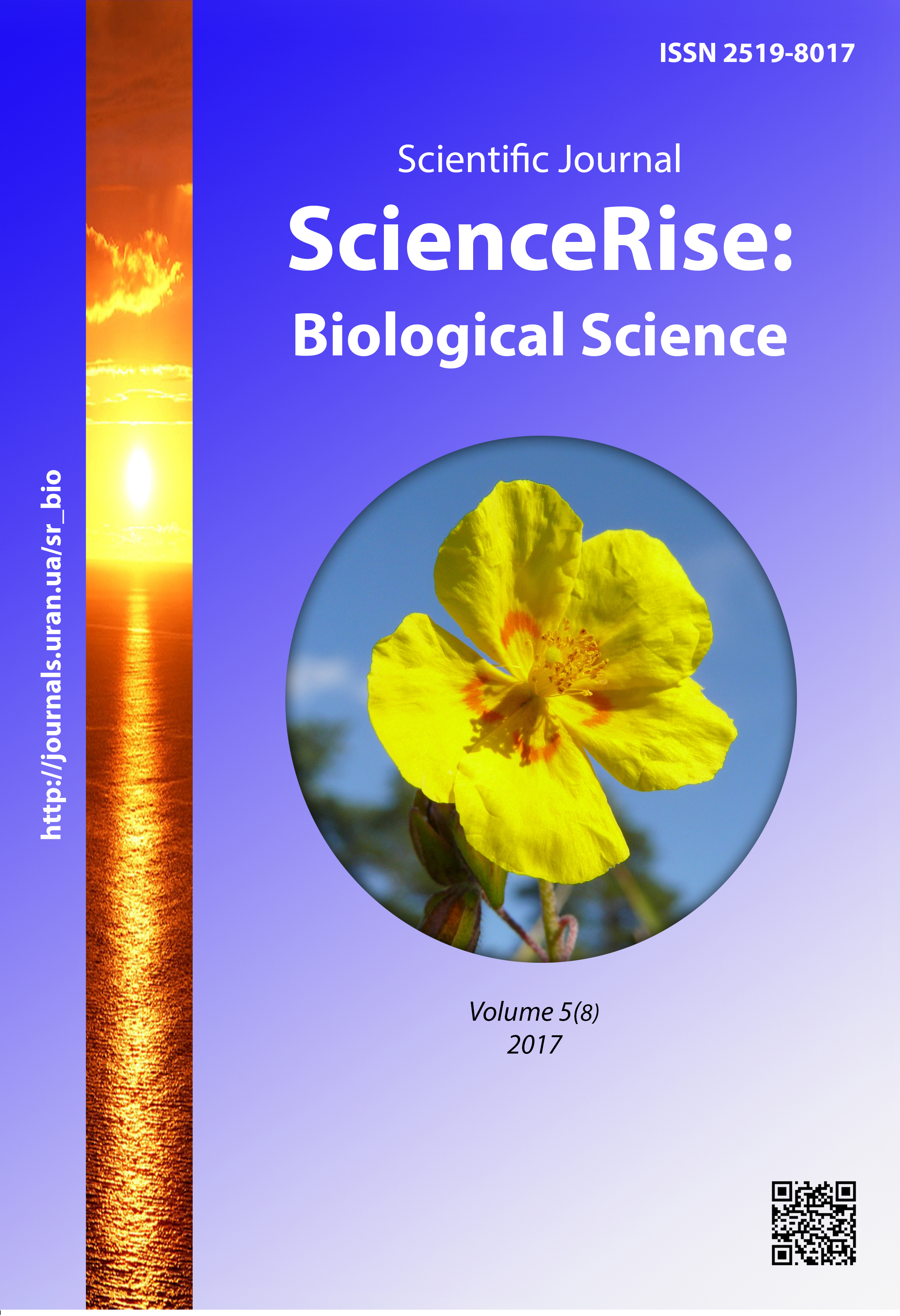Investigation of the neuroprotective effect of halloysite nanocrystals on the restorative function of mice brain neurons
DOI:
https://doi.org/10.15587/2519-8025.2017.113525Keywords:
neuroptotective, nanocrystals, halloysite, antioxidant, nanotubes, amyloid genesisAbstract
There were studied neuroprotective effects of halloysite nanocrystals on the decrease of protein synthesis – amyloid proteins and activation of neurogenesis in mice with genetic mutation of АРР, PSN -1, PSN – 2 genes. Halloysite inhibits B monoaminoxidase activity, at that A monoaminoxidase activity increases. All studied compounds inhibit Са2+ glutamate-induced hold in synaptosomes. The study was realized on mice of С57BL/6 line with the preliminary reproduction of the defect of beta-amyloid proteins. Nanotubular halloysite was used as a neuroprotector. The analysis of the change of the quantity and localization of aggregates of beta-amyloid proteins before and after using nanotubular halloysite was realized by methods of fluorescent detecting of сonfocal microscopy. There is demonstrated the neuroprotective interaction and stimulation of neurons restoration. The results demonstrated the decrease of beta-amyloid proteins, neurogenesis activation, high antioxidant potential of halloysite nanocrystals that is a precondition of the neuroprotective potential of nanotubular halloysite
References
- Ryazantseva, M. A., Mozhaeva, G. N., Kaznacheeva, E. V.; Ugryumov, M. V. (Ed.) (2014). Patogenez bolezni Al'tsgeymera i kal'tsievyy gomeostaz. Neyrodegenerativnye zabolevaniya: ot genoma do tselostnogo organizma. Vol. 2. Moscow: Nauka, 163–181.
- Tatarnicova, O. G., Orlov, M. A., Bobkova, N. V. (2015). Beta-amyloid and tau –protein: structure, interaction and prion-like properties. Success of Biological chemistry, 55, 351–390.
- Abdullayev, E., Joshi, A., Wei, W., Zhao, Y., Lvov, Y. (2012). Enlargement of Halloysite Clay Nanotube Lumen by Selective Etching of Aluminum Oxide. ACS Nano, 6 (8), 7216–7226. doi: 10.1021/nn302328x
- Abdullayev, E., Sakakibara, K., Okamoto, K., Wei, W., Ariga, K., Lvov, Y. (2011). Natural Tubule Clay Template Synthesis of Silver Nanorods for Antibacterial Composite Coating. ACS Applied Materials & Interfaces, 3 (10), 4040–4046. doi: 10.1021/am200896d
- Bates, T. F., Hildebrand, F. A., Swineford, A. (1950). Morphology and structure of endellite and halloysite. American Mineralogist, 35, 463–484.
- Cavallaro, G., Lazzara, G., Milioto, S. (2012). Exploiting the Colloidal Stability and Solubilization Ability of Clay Nanotubes/Ionic Surfactant Hybrid Nanomaterials. The Journal of Physical Chemistry C, 116 (41), 21932–21938. doi: 10.1021/jp307961q
- Wang, L., Chen, J., Ge, L., Zhu, Z., Rudolph, V. (2011). Halloysite-Nanotube-Supported Ru Nanoparticles for Ammonia Catalytic Decomposition to Produce COx-Free Hydrogen. Energy & Fuels, 25 (8), 3408–3416. doi: 10.1021/ef200719v
- Stefani, M. (2004). Protein misfolding and aggregation: new examples in medicine and biology of the dark side of the protein world. Biochimica et Biophysica Acta (BBA) – Molecular Basis of Disease, 1739 (1), 5–25. doi: 10.1016/j.bbadis.2004.08.004
- Liu, M., Guo, B., Du, M., Chen, F., Jia, D. (2009). Halloysite nanotubes as a novel β-nucleating agent for isotactic polypropylene. Polymer, 50 (13), 3022–3030. doi: 10.1016/j.polymer.2009.04.052
- Rawtani, D., Agrawal, Y. K. (2012). Multifarious applications of halloysite nanotubes: a review. Reviews on advanced materials science, 30, 282–295.
- Yuan, P., Tan, D., Annabi-Bergaya, F. (2015). Properties and applications of halloysite nanotubes: recent research advances and future prospects. Applied Clay Science, 112-113, 75–93. doi: 10.1016/j.clay.2015.05.001
Downloads
Published
How to Cite
Issue
Section
License
Copyright (c) 2017 Semen Buriachenko

This work is licensed under a Creative Commons Attribution 4.0 International License.
Our journal abides by the Creative Commons CC BY copyright rights and permissions for open access journals.
Authors, who are published in this journal, agree to the following conditions:
1. The authors reserve the right to authorship of the work and pass the first publication right of this work to the journal under the terms of a Creative Commons CC BY, which allows others to freely distribute the published research with the obligatory reference to the authors of the original work and the first publication of the work in this journal.
2. The authors have the right to conclude separate supplement agreements that relate to non-exclusive work distribution in the form in which it has been published by the journal (for example, to upload the work to the online storage of the journal or publish it as part of a monograph), provided that the reference to the first publication of the work in this journal is included.









